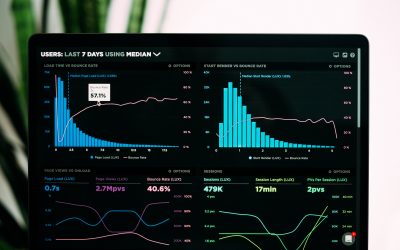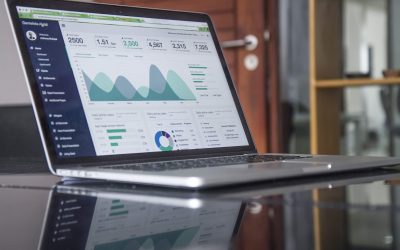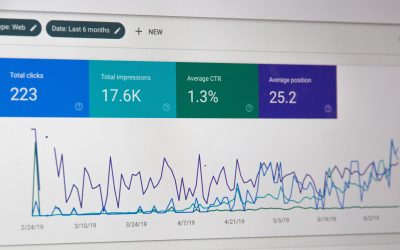Now more than ever, it’s important to use every tool at our disposal for tracking SEO. With the importance of a strong digital presence, being online isn’t just an option anymore—it’s a necessity. If you’re not online or not properly positioned, you risk missing out on a significant portion of your customer base.
As digital marketers, we’re often presented with the question; How should I be tracking SEO if my business relies on in-person shopping AND online sales?
One of our early clients was a clothing retail business with a brick-and-mortar store and an e-commerce site. The store owner often questioned the value of SEO, pointing out that most of his sales came from people visiting the shop rather than from online purchases through his Shopify store. And, to be fair, he was right.
His understanding of SEO was that he would get more online sales from ranking better in Google. So when the money he was spending was not coming back to him in the form of eCommerce revenue, he wasn’t pleased. We lost that client not because we didn’t generate enough revenue, but because we couldn’t clearly explain to him how our work contributed to the traffic that walked through his door each day.
We learned a ton from that experience. The key takeaway was that we needed better processes for tracking the impact of local SEO on offline interactions.
If you’re an eCommerce business, tracking SEO and pinpointing which channels drive your revenue is relatively straightforward. But when you have a brick-and-mortar shop, there are many more variables to consider when it comes to accurate attribution.
What is Local SEO and Why is it Important for Brick-and-Mortar Businesses
Local SEO helps you boost your business’s ranking in search engine results, making it easier to reach a local audience. The goal is to improve your online presence so you show up in Google’s local 3-pack when people search for terms like “men’s clothing store Vancouver,” driving both online sales and foot traffic to your physical location.
In recent years, local searches have skyrocketed, making local SEO an essential part of any marketing strategy. By optimizing for local search, businesses can boost their online visibility while increasing walk-by traffic to their brick-and-mortar stores.
But, how do you know if people are visiting your store because of your local SEO efforts, rather than just walk-by traffic or word of mouth? And, how do you know if your efforts are improving your performance online?
How to Track Local SEO Efforts on Brick-and-Mortar Sales
Google My Business
Make sure that your GMB listing is active and complete. Your phone number, store hours, and address are no-brainers, but you should also be listing products, news, and Q and A’s. Anything related to your business!
Make sure to review your monthly report and include UTM parameters on all your GMB links to understand how users are engaging with your GBP fully. Tagging your links with these parameters gives you detailed insights into which campaigns, sources, or mediums are driving traffic and conversions from your GMB profile.
Call Tracking
Call tracking helps you track SEO performance for brick-and-mortar sales by linking phone inquiries directly to your online efforts. When you use call tracking, you assign unique phone numbers to different marketing channels, including your website, GMB profile, specific landing pages, or social profiles. Call tracking software like CallRail or WhatConverts, allows you to see which SEO-driven activities are driving customers to call your store.
Yes, people still call businesses.
Click-to-Collect
Click-to-collect or buy online, pick up in-store is a strategy that allows customers to purchase items online and then pick them up at a physical store encouraging them to browse and potentially purchase more. However, this approach is also used to bridge the gap between online and offline sales, making it easier to track the impact of digital marketing efforts on physical store performance.
Online Coupon Codes
Online coupons that are only redeemable in-store help paint the picture of which customers are engaging with your brand online.
Similar to call tracking, online coupon codes help track SEO performance for brick-and-mortar sales by painting a picture of which customers are engaging with your brand online. Each code can be tied to a specific campaign, keyword, or landing page, allowing you to see which aspects are having the biggest impact.
Customer Profiles
Building customer profiles can help you consolidate online orders and in-store purchases for your customers. By creating detailed profiles that combine online and offline data, you gain a comprehensive understanding of your customers’ behaviours and preferences.If your local customers are also shopping online, it’s a strong indicator that your business is well-optimized for local search. People gravitate toward seamless digital experiences, and if they’re choosing your online store as well, it shows that you’ve made it easy for them to find and shop with you.
How to Track Local SEO Performance Online
Surrounding postal codes
Tools like Moz and Local Falcon allow you to track how your website ranks at a hyper-local level. Tracking search performance at this level will tell you if people in your neighbourhood are seeing your store in their Google searches.
- Moz Local allows businesses to enter their postal code to ensure that their listings are accurate and consistent across search engines, maps, and directories.
- LocalFalcon allows users to specify a central location and then set up a grid of multiple points within that area. The tool then performs rank tracking across this grid, showing how a business ranks for specific keywords at various points within the postal code area.
Organic Rankings
With tools like Ahrefs or Semrush, you can track how well your website ranks for branded terms and keywords that align directly with what you offer. While many of these searches may lead to online sales, queries like “women’s clothing stores in Vancouver” often indicate that users are looking to visit a physical store.
Local Citations: {Your Brand} + “phone number” and “address”
Another subtle yet effective way to track local SEO performance is by monitoring search queries where users type your brand name along with terms like “phone number” or “address” into a search engine. This helps measure how often people are looking for your business’s contact details. By analyzing the frequency of these searches, you can gain valuable insights into how many potential customers are actively trying to find and connect with your business.
Website Performance
Tracking how much traffic your website gets from local searches is a smart way to measure local SEO performance. With tools like Google Analytics, you can see how much of your traffic comes from local search queries. This helps you figure out if your local SEO is working and how well your site is drawing in visitors from specific areas.
Track SEO ROI With Method and Metric
By no means is there a perfect system to track a person from online interaction to an in-store purchase (without evasive user tracking and 24-hour surveillance). But with a little ingenuity, you can start to build a better understanding of how customers arrive at your shop.
We’ve come a long way in our eight years in business. At Method and Metric, we use data-driven insights and tailored strategies to help you piece together the journey your customers take—from their first online search to walking through your door. Book your free local SEO audit today.




